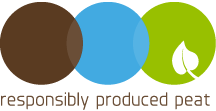Agaris Poland
After-use for Rucianca and partly Kraculice
For Rucianca, the last plot was fully extracted around 2022 and restorations took place for appropriate after-use implementation, rewetting according to the license.
After peat extraction is completed, the reclamation process must be finalized within five years following the cessation of industrial activities. Disassembly of infrastructure, such as railway tracks and PVC pipe culverts, will in the first year after extraction. These materials will be recovered and reused. Following this, the field undergoes further preparation to support biological regeneration:
- Culverts Disassembly: Removed infrastructure will be reused.
- Filling of drainage ditches with soil from surrounding areas.
- The main drainage ditch will be closed to eliminate water runoff, once extraction ends across the entire deposit.
- Within two years, properly executed reclamation works will result in the area achieving a humidity level of 91%. Vegetation will gradually develop, starting with pioneer species like tussock cotton grass and common sundew. Sphagnum moss, sedge, and other bog species will follow
- The reclamation plan must be submitted to the District Office for approval. Plots where restoration has been completed will be returned to the authorities after the implementation of the reclamation plan has been approved.
The after-use implementation will be evaluated by an independent inspector to verify that all RPP obligations for this location have been fulfilled.
What is rather unique about the after-use implementation at these locations in Poland is, that areas where extraction has been completed are immediately prepared for after-use and, after approval, returned to the owner.
For example for Kraculice, approximately 21 of 57 ha has been given back already after the reclamation was considered completed by the authorities.
Torfwerk Moorkultur Ramsloh
After-use for Heyens and Schlangen
In 2023, the site Rauert underwent comprehensive after-use preparations following peat extraction. During the year 2024, the sites at Heyens and Schlangen have also been completed. All locations were restored according to the approach "Extensive Grünlandnutzung auf Hochmoortorf mit Nutzungseinschränkungen" (use as extensive meadows on bog peat with restrictions).
The sites have been adequately prepared for their intended after-use, which is agriculture, and two sites have since been returned to their respective owners, Heyens is expected to reach that stage in April 2025. The after-use is agriculture on the plot itself because it is surrounded by drained agricultural land, and cannot be rewetted properly. Since 1985, in germany, for every peat extraction area which is only licensed on formerly agricultural used peatlands, there has to be compensation. The compensation is initiated from the commencement of extraction activities on various plots in a protected area where measures for the protection of birds are taken. In this area, land use transitions from agriculture to extensive grassland with specific requirements, such as late mowing and a higher water table, to serve as a habitat for shorebirds.
The company carried out the following measures to prepare the sites for proper after-use:
• Levelling of the extraction horizon within ±10 cm
• Levelling of inner drainage ditches
• Spreading of removed peat-topsoil
• Diking of the area (only for rewetting areas)
• Compaction of embankments using bulldozers or excavators
• Installation of overflow structures (only for rewetting areas).
• Inspection and acceptance of the site by the district authorities.
• Creation of a map (aerial image with measurement data: elevations and peat coverage).
There is a backlog for final inspections at the issuing authorities (Untere Naturschutzbehörde, Wasserverband) because of which the final approval is expected to happen in spring 2025.
